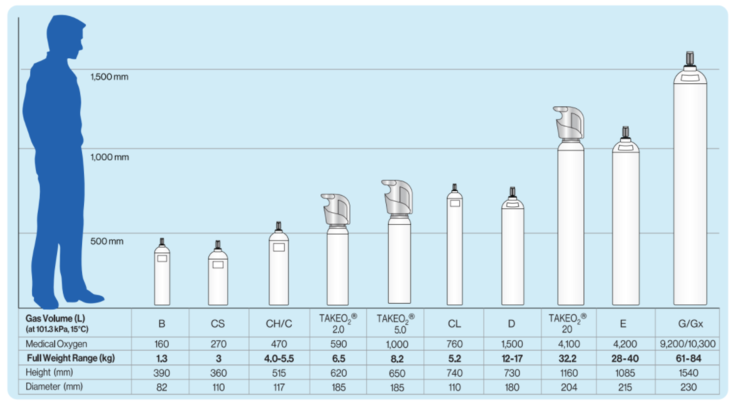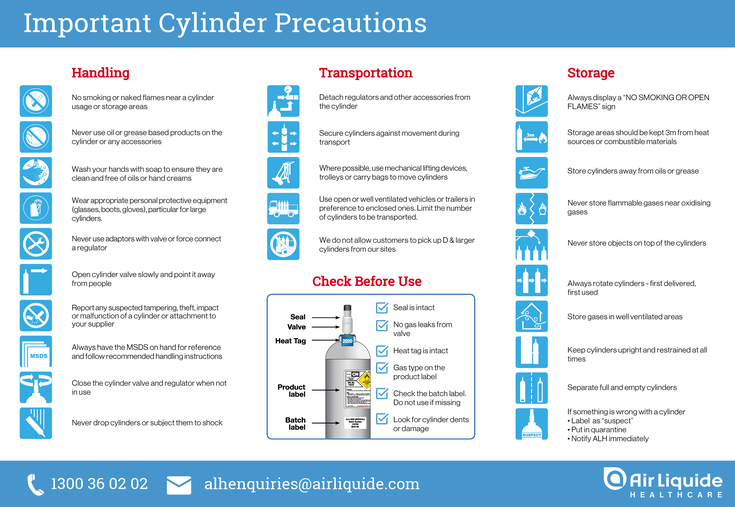Medical Oxygen
Safety Data Sheets
-
Compressed Gas
Download the document PDF (339.19 KB) -
Refrigerated Liquid
Download the document PDF (340.86 KB)
Medical oxygen is a respiratory assistance gas.
It is used as a medical treatment in both chronic and acute cases. Depending on the prescription, it may be used for:
- Correction of hypoxia
- Supply to ventilators in anesthesia and resuscitation
- Nebulisation for respiratory aerosol medications
Medical Oxygen Product Information
Indications: For respiratory delivery where there is a requirement for medicinal oxygen to treat or prevent hypoxemia.
Contraindication: There is no formal contraindication to normobaric oxygen therapy. Due to increased risk of fire, patients should not smoke during oxygen therapy.
Method of Administration: In the emergency/acute setting, the usual dose for adults to treat or prevent acute oxygen deficiency is 3-4 litres per minute when using nasal prongs or 5-15 litres per minute with a mask. Oxygen treatment must be continuously evaluated and the effect measured by means of PaO2 or arterial oxygen saturation.
Adverse Effects (extract): Up to 2 atmospheres, pulmonary toxicity occurs before CNS toxicity; at higher pressures, the reverse applies. Symptoms of CNS toxicity include nausea, mood changes, vertigo, twitching, convulsions and loss of consciousness.
Interactions with other Medicines: Potentially fatal pulmonary toxicity can develop in patients treated with Bleomycin who are exposed to conventional oxygen concentrations during anaesthesia. High dose oxygen may increase the risks of Amiodarone-induced post-operative adult respiratory distress syndrome (see Amiodarone Product Information)
Product Information: Please review Product Information before prescribing. Available from Air Liquide Healthcare or downloaded from the TGA Public Information website eBS.



